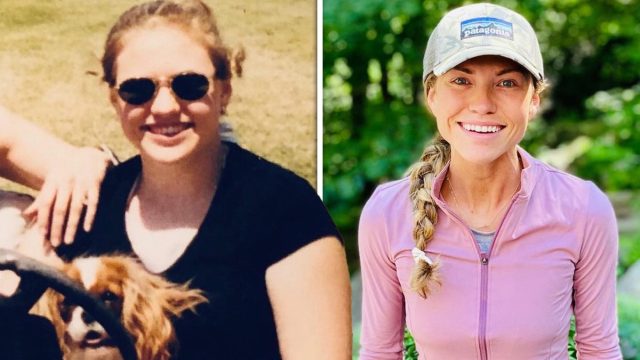Coach Reveals 4 Reasons Why You Aren't Losing Weight That Have Nothing to Do with Your Hormones

Are you doing everything right but still can't seem to lose weight? It can be easy to blame it on hormones, but that isn't always the case. Kate Douglass is a Wellness Recovery Coach, podcast host, and social media influencer whose mission is helping people "turn setbacks into comebacks" and "get back on track." In a new post, she reveals why you might not lose weight, even though you "eat plenty of protein," track your steps, and "even cut out sugar" – that has nothing to do with your hormones.
You Aren't Really Eating Healthy
The first reason could be that you are eating "clean," but not healthy. "Let's be honest—those 'healthy' snacks, gluten-free crackers, protein bars, and sugar-free treats? They're adding up fast, and food labels are sneaky AF. What you think is a small snack might be packing in 300+ calories without even filling you up," she says.
You Aren't Moving Enough During the Day
Next, just because you are getting sweat session in, doesn't mean you are moving enough the rest of the day. "You're working out, but how much are you moving the rest of the day? Hitting Pilates three times a week is great, but if you're sitting 8+ hours a day and barely hitting 5k steps, your overall activity isn't cutting it for fat loss. Movement outside the gym matters more than you think," she says.
You Are Stressed
Stress could be another reason why you are holding on to weight. "It's a silent saboteur. Chronic stress cranks up cortisol, which makes your body hold onto fat like it's prepping for hibernation. And let's not even talk about the emotional snacking that stress triggers (been there, done that!)," she says.
Your Weekend Cheating Is More Harmful Than You Think
"Weekends aren't as harmless as you think," she says. "I know, you 'only' have a couple drinks, a bite of dessert, and a fun brunch with the girls—but those indulgences can easily push you into a calorie surplus, stalling all the hard work you put in during the week," she says.
RELATED: This Is Exactly How to Lose Body Fat This Year
It's Likely Your Habits Over Hormones
"Look, babe, I say this with love—it's not your hormones, it's your habits," she says. "And that's good news, because it means we can fix it. You don't need to overhaul your life, you just need a smarter approach."
There Are Reasons Your Body Could Be Holding Onto Fat
In another post, she reveals another scenario of why the weight "won't budge." She says "the truth" is, your body "isn't the exception to the rules of fat loss—but it is incredibly smart. If it feels stressed, underfed, or overwhelmed, it will adapt by holding onto fat," she says, going onto reveal "what might actually be happening."
Your Body Is in Survival Mode
The first thing that could happen is that your body is in survival mode. "High stress + low recovery = more belly fat storage, even with a calorie deficit," she writes.
RELATED: 12-3-30 Walking Method: 20 Proven Tips to Lose Weight Faster
There Are Hidden Calories
There may also be hidden calories in your food. "Even 'clean' foods can throw off your deficit if portions and tracking aren't accurate," she says.
You Hit a Workout Plateau
You may have hit a workout plateau. "Your body might need progressive overload or more recovery, not just more effort," she says.
Or, You Are Hitting Hormonal Roadblocks
You could also be hitting hormonal roadblocks. "High cortisol, insulin resistance, thyroid issues, or perimenopausal changes can make fat loss feel impossible," she writes.
You Are Experiencing Adaptation Overdrive
Her last revelation? You could be experiencing adaptation overdrive. "Sometimes, what worked before doesn't work now. Your body needs new strategies to adapt," she says.
RELATED: 8 High-Protein Foods with Nearly Zero Calories That Melt Fat
The Bottom Line
The bottom line? "Your body isn't broken—it's adapting to what you're giving it. Instead of working harder, it's time to work smarter," she says.




